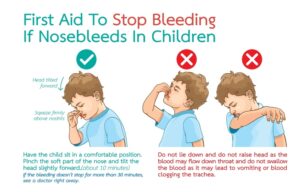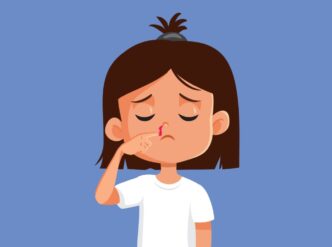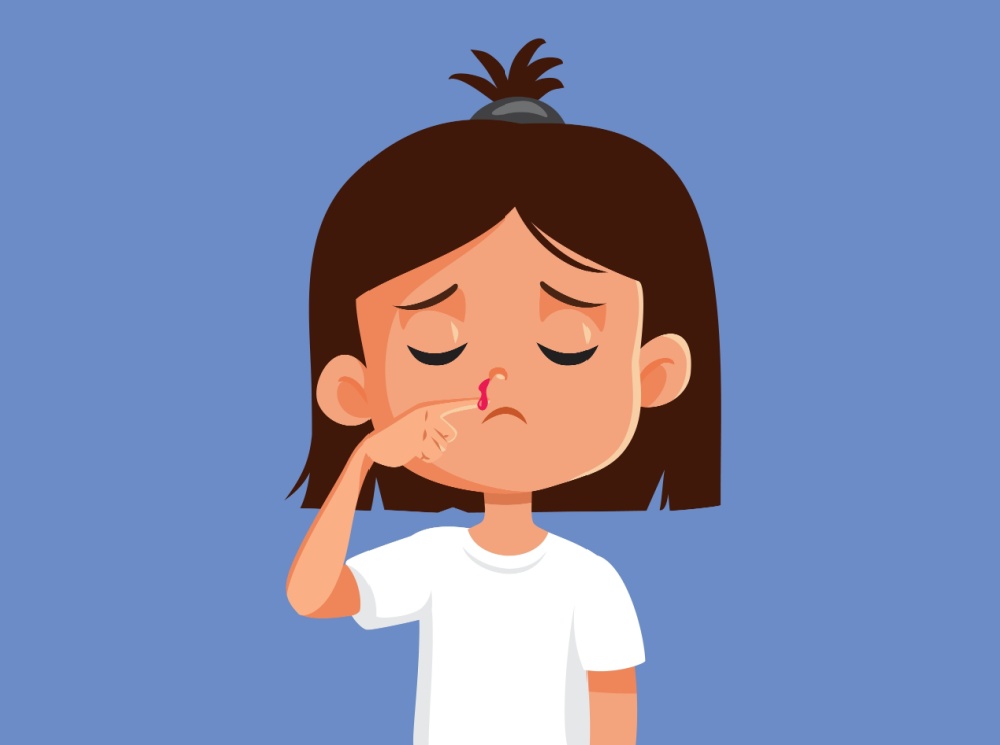Attila the Hun, the much-feared fifth century king, managed to carve an empire from the Black Sea to the Mediterranean, and his name sent jolts of fear down the spines of even the most daring generals of the Roman Empire. Alas, the mighty leader eventually died… allegedly of a nosebleed. Can a nosebleed really be that dangerous?
WORDS LIM TECK CHOON
 FEATURED EXPERT FEATURED EXPERTPROFESSOR DATO’ DR BALWANT SINGH GENDEH Senior Consultant Ear, Nose, and Throat (ENT) Surgeon Pantai Hospital Kuala Lumpur |
USUALLY NOT SO SERIOUS IN CHILDREN
Professor Dato’ Balwant Singh Gendeh tells us that a nosebleed is not usually serious in children.
- It is sometimes seen in children with allergies who also suffer from infections, such as during a bout of allergic rhinitis or when the child inserts a germ-filled finger or two up a nostril.
- Children may also get a little rough while playing and sustain a nosebleed as a result.
However, these cases are usually self-limiting, as the bleeding often goes away on its own after a short while.

However, consult a doctor if the child experiences frequent nosebleeds, and/or the amount of blood is worrisome.
IT CAN BE WORRISOME WHEN IT HAPPENS TO CERTAIN OLDER CHILDREN
Teenagers, especially males, who also suffer from nasal obstruction on top of nosebleed should consult a ear, nose and throat (ENT) specialist.
This is because the presence of both the bleeding and the obstruction could be a sign that they have angiofibroma.
Angiofibroma
- Angiofibroma is a benign or non-cancerous tumour formed in the nasal cavity.
- It almost exclusively affects males.
- It commonly shows up in those between 7 and 19 years of age.
Why see a doctor?
While the tumour is benign, it can grow in size and eventually protrude into the surrounding tissues such as the sinuses, eye cavity or orbit, and the space in the skull occupied by the brain or cranial vault.
As a result, the affected person may experience any or some of the following:
- Appearance changes such as swollen cheeks, bulging eyes and drooping eyelids.
- Cranial nerve palsy, which happens when the tumour presses into and damages nerves linked to the brain, causing difficulties in controlling facial muscles and/or eye movements.
- Hearing loss when the tumour obstructs the Eustachian tube.
- When the tumour grows into the eye cavity and presses onto the optic nerves, double vision or blindness may occur over time as a result of damage to these nerves.
- While not common, some affected people may lose their sense of smell.
Treatment
Professor Dr Balwant explains that angiofibroma can be removed via endoscopic endonasal approach (EEA) surgery.
- This is a relatively straightforward procedure that involves the removal of the tumour while guided by an endoscope through the nostril.
- If the tumour is removed completely, there is usually no recurrence.
He advises to see a doctor quickly if the nosebleed is severe or torrential.
- Otherwise, we may be at risk of hypovolemic shock, a condition in which the heart is unable to pump enough blood to keep up with the blood loss.
- This will cause body organs to malfunction or even stop functioning altogether.
CERTAIN ELDERLY PERSONS NEED TO BE ESPECIALLY CAREFUL OF NOSEBLEEDS
Members of the elderly age group that experience both nosebleeds and nasal obstruction must see an ENT specialist to ensure that they do not have health conditions that cause these issues.
CAN NOSEBLEEDS BE A SIGN OF CANCER?
Dr Balwant explains that nasopharyngeal carcinoma (NPC) is one of the conditions that can be responsible for both the nasal bleeding and obstruction.
- NPC originates in the nasopharynx, which is the area that encompasses the upper part of our throat, behind our nose.
- NPC is especially common among the Chinese in Malaysia, and it mainly affects adults aged 40 to 60.
| Professor Dato’ Dr Balwant has provided more details on nasopharyngeal carcinoma in a past article. Click here to read that article. |
ARE NOSEBLEEDS A SIGN OF HIGH BLOOD PRESSURE?
Professor Dr Balwant further explains that, in the absence of other causes of nosebleed such as injuries or lesions in the nose, moderate to severe (torrential) nosebleed can be a result of high blood pressure or hypertension.
If we experience such nosebleeds, especially on a frequent basis, we need to see an ENT specialist as soon as possible.
| Hereditary haemorrhagic telangiectasia
Frequent nosebleed is one of the symptoms of a rare genetic condition called hereditary haemorrhagic telangiectasia (HHT) or Osler–Weber–Rendu disease.
|
NOSEBLEED COULD BE A SIDE EFFECT OF TAKING CERTAIN MEDICATIONS
Medications that prevent the formation of blood clots, such as anti-coagulants like warfarin or anti-platelet drugs such as aspirin, can cause nosebleeds as a side effect.
These medications are commonly prescribed to treat health conditions related to our cardiovascular system.
We should let our doctor know if we experience frequent nosebleeds while taking these medications.
| This article is part of our series on health issues related to our ears, nose, and throat. |













